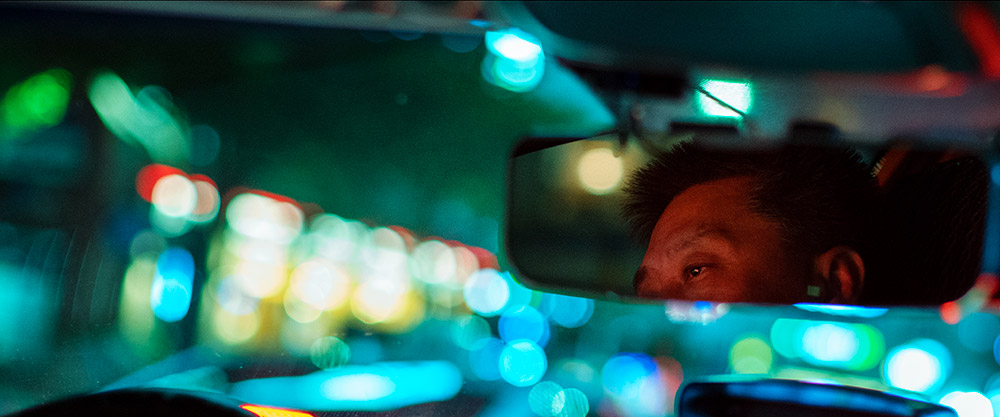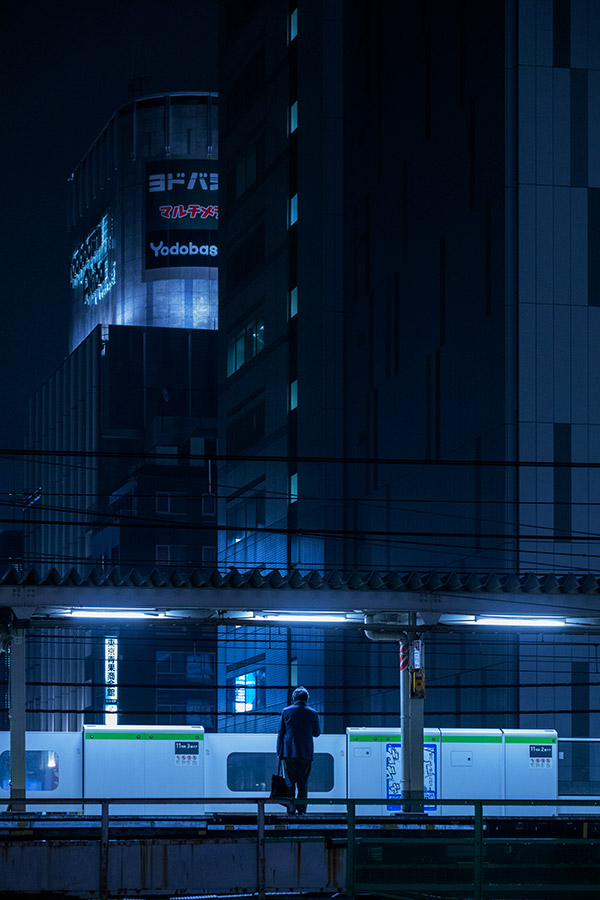Liam Wong has built a global reputation for his unforgettable images of cities at night, notably Tokyo. With his new book After Dark out in October, he shares his secrets with Steve Fairclough
You get a sense of the power that Liam Wong’s pictures possess when you realise his new book, After Dark, was backed by a crowdfunding campaign that reached over five times its initial £40,000 target. His previous tome, TO:KY:OO, focused on the Japanese capital and his neon-lit, cyber punk-style, night-time urban images evoked visions of classic sci-fi noir movies such as Blade Runner. But, for his latest book, Liam has gone for arguably slightly more subdued colours and has travelled around the world, shooting in cities such as Seoul, Paris, London, Chongqing, Osaka, Hong Kong and his hometown city of Edinburgh.
Liam Wong: After Dark
After Dark is his second monograph and, as with TO:KY:OO, it features cities shot in the small hours of the morning and has superb design with specially created typography (by Toshi Omagari) which, this time, was inspired by the work of legendary Chinese film director Won Kar Wai. The book also deliberately features Swiss binding, which allows its spine to lay flat and means the central parts of images running across spreads don’t get lost in the gutter of the book.
Of After Dark, Liam explains, ‘There were all these places that I visited, but it wasn’t something that I necessarily thought, “Yeah, this is a series.” That was the difference. With TO:KY:OO it was three or four years of images of one city. But then online I would post, “Here’s London after dark,” “Here’s Osaka after dark.” At some point, I was like, “Well, what if I brought those together in a way that they all fit?”’
Just shy of 200 images fit together in After Dark, with the ‘Volume Edition’ cover featuring an image of Hong Kong that Liam shot back in 2017. ‘The cover is a funny one. I took that in 2017, which was during the whole time I was in Tokyo. I was so bad at low light back then, but it was one picture that I was really happy with. When I went to Hong Kong for the first time it was completely dark compared to what I was used to in Tokyo. At the time I only had kit lenses, which restricted me because both of them that I had were f/4, so it was very hard to let light in. As I got better at low light, then expanding my gear helped a lot but there are images in there that are as old as that.’

HK Mansions, Hong Kong – the image that features on the ‘Volume Edition’ cover of the After Dark book
Favourite city
Tokyo is clearly Liam’s favourite city and travel is obviously in his blood as he was born in Edinburgh, Scotland, worked as a video game designer for Ubisoft in Montreal, Canada, and spent all his time off travelling around the world. With the expansion of locations in his latest book Liam reveals, ‘I went to Chongqing – it was the first time I’d ever been in China.
Chongqing is a mega city – it’s this huge place that a lot of people haven’t heard of. What I found interesting was that after 8pm it would be quiet with nobody around. It kind of speaks to that culture of working and then getting ready for the next day. So, the types of things you do see are market workers going around the back streets and everyone preparing for the next day.’
‘The architecture in that city is so advanced but you still have the older [buildings], like temples and shrines – there’s this one rooftop temple that I remember seeing on my Google. I saw some other photographers had taken pictures and I really wanted to go there. It’s one of those cities that’s a real cyber punk place because of how quickly it has advanced. Going there was probably my favourite in recent memory, outside of places that I was already familiar with.’
Aside from choosing which cities he wants to visit and work in at night, Liam is faced with challenges when shooting in the middle of the night. ‘Everything revolves around light and with that comes safety concerns because you’re walking around by yourself when it’s dark. That’s almost a bigger issue than capturing an image, you have to always be aware of your surroundings.’
He continues, ‘That reflects on the type of equipment I carry. I get asked a lot if I use a tripod and that’s one of the reasons that I don’t, because I don’t want to stand out too much. With low light one thing I got good at was being able to use my arms in a way that would act like a tripod but it meant I could shoot at a shutter speeds that allowed me to have more light come in, in a way that I also don’t have micro vibrations in my shot… I practised that. The only time I ever use a tripod is if I’m sure no one is around, whether it’s a monsoon or heavy rain, and I know that nobody is just going to appear randomly.’
Use of flash
Although his work is characterised by the use of available artificial street lighting, Liam does sometimes deploy flash. ‘Flash is perfect when you have a narrow alleyway which you can light up. I have a remote Cactus flash trigger and with that I use a GorillaPod that I can wrap around a doorway or a pipe, then I put gels on the flash. But it has to be somewhere narrow that I can light with the bounce [flash]. It’s a way to introduce colour into the scene that wasn’t there.’
With an Instagram following of over 220,000, Liam often uses social media to share his work and gain feedback. ‘I think about the life that a photo takes on after I share it. I always encourage people that follow my stuff to, if you have a creative block, take one of my shots and do whatever you need to do.’ Liam uses Instagram as a barometer. For example, he posted a scene shot in Tokyo with three lenses – a 14mm, a 35mm and a 50mm – to gauge which one his audience preferred.
For his post-production he uses Adobe Bridge and Photoshop. He explains, ‘I find Adobe Bridge isn’t so commonly used, however I use it to browse and review all of my files. Within the program, I have a bunch of presets in Camera Raw which I’ve created over the years. From there, I tweak them depending on the image. Bridge is linked to Photoshop, which I’ve used ever since I was a teenager so I find it easier to use than Lightroom.
With Bridge, I can quickly apply presets to multiple images at once from the same sequence. When editing, I try to think “Okay, how do I want this? What can I change?” Even things like cropping, I’ll think about “How can I frame this better?”. Once I lock the composition, I can play with colour adjustments to match the mood I’m going for.
Insta inspiration
To help his image choices for the new book Liam again turned to Instagram. ‘One thing that helped was thinking about which images did people like the most, respond to and engage with? That really helps when it comes to being a modern photographer and being into the social media side, where I can go to get statistical research. I had clear ideas of which ones would go in the book.
But then it was, “Which ones deserve a spread? Which ones can be smaller? Is it an equal amount of each city?” But I thought, “I’m not making a tour guide.” I only wanted the shots that I felt something for and other people engaged with, then I tried to combine them all together.’
Liam sums up After Dark as ‘Photographs of a city at night presented in a cinematic format, exploring the theme of urban loneliness.’ That format he refers to is the fact that the book is in landscape format and his images are framed to cinematic ratios – 2.39:1, 1.85:1, 16:9 and 4:3.
He explains, ‘Before the first pandemic I had been to the Vatican City, London, Osaka, Kyoto, Chongqing, Hong Kong – all these shots were done. Then the pandemic happened. To me it was kind of a normal thing but people were saying, “Wow, this is kind of weird,” whereas I always went out of my way to find that emptiness. So, throughout the book, is that theme of these big cities that are pretty much empty, but you have all the lights still on. It has that kind of vibe of “what’s the story there?” But it just springs from the streets.’
Liam’s top tips for nocturnal city photos that stand out
1. Check your focus
‘One of the hardest things is getting a shot that’s in focus at night. With my Sony A7R III I have the quick custom key with the digital zoom, so I’ll tap it and I can check if everything’s in focus. I can look at my ISO briefly, just to see if it’s good, and then I take the shot. I can alternate between manual focus and autofocus. That helped me a lot when it came to low light.’
2. Find an interesting backdrop
‘The thing I look for most is just the interesting backdrop when I think about architecture.’
3. Using existing lights
‘I think about lighting and try to find places that are already lit.’
4. Find moments
‘Try to find moments of isolation. Find people who are almost like ants in these big cities and try to frame that to show that contrast. When I’m shooting at 3am or 4am think about what these people are doing, people who are maybe finishing work, starting work.’
5. Have a clear theme
Have a clear idea and theme. For “urban loneliness” I want to show what these cities look like when everyone’s asleep and how are they similar? I have taxi driver shots in Seoul and ones in Tokyo. Think of a theme and think about how the images work together.’
Essential advice for editing engaging night-time images
1. Always shoot raw
‘The first tip I always give is that I always shoot raw, so that gives me a bit more leeway when it comes to editing images. Because it’s low light I play with the colours a lot because I try to minimise the noise. Normally I just shift it up so that my mid-tones are brighter because in raw I can afford to shoot images darker and then brighten them up in post. I always underexpose by a stop. People underestimate how much you can bring out of a raw file.’
2. Think before you shoot
‘I always think about what’s in the image first before I edit it. I think about the subject in my frame and how I can move around and compose myself, and my shot, before I even think about colour – that helps a lot.’
3. Work with colours
‘With my TO:KY:OO shots I was going for this sort of super-stylised look, but After Dark is more inspired by someone like [film director] Michael Mann’s movies, stuff like Heat or Collateral. I’m just inspired by film stock where what I’m doing is looking at colour temperature and thinking, “Is it cooler or warmer?” I’m looking for complementary colours, but it’s more subdued than say TO:KY:OO. I got good at editing to a point where I can see a colour and know how I can correct and fine-tune those individual colours. It’s not very hard, but I think if you learn it then you get quite far.’
Liam’s Kit list
Cameras
‘I have the Canon EOS 5D Mark IV and the Sony A7R III and I kind of alternate between them. I like to have a dual yield so I can have one lens on one camera, kind of like a wedding photographer, before I have to switch. I actually use the 14mm mostly on my Sony because I got it with a mount that fits on and that one is extremely light.’

Canon 24-70mm f/4
‘In TO:KY:OO I hadn’t got many lenses – the main one was a Canon 24-70mm. After Dark is where I ended up using way more lenses. I’d never used an ultra-wide before and I’d never used a lot of prime lenses. When I tried all these different lenses, I started to kind of open up a little bit more creatively.’
Canon 35mm f/1.4
‘In this book my main lens is a 35mm f/1.4 Canon – I just love that lens. It was the first one I thought, “Well, it’s pricey but I’ll buy it.” I think it’s to do with the fact that the aspect is kind of similar to film and also its low-light capabilities.’
Sigma 14mm f/1.8
‘At that time I also tried a few wider ones like a 14mm Sigma, which I didn’t have before. It’s like this big globe of glass. It’s a heavy lens but is amazing. I have a bunch of photos that I took with that lens in After Dark and it was really just like opening up shots.’
Canon 50mm f/1.2
‘Another lens I love is the 50mm Canon f/1.2, so it’s actually quite an old lens. I got this second-hand one in Tokyo and I use that on both my Sony and my Canon cameras.’
How to crowdfund a photo book
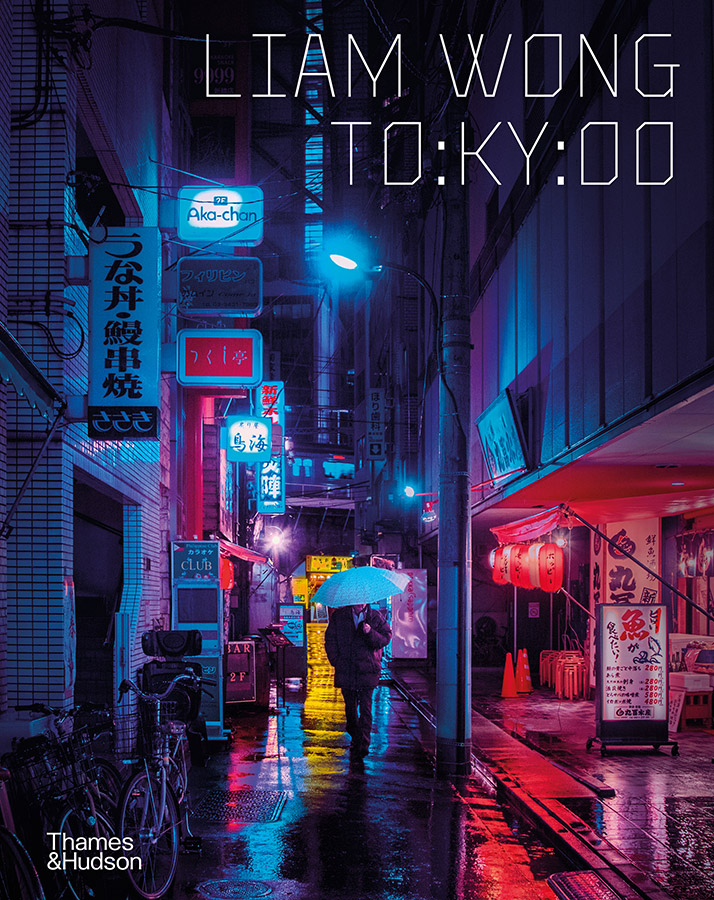
‘When I wanted to make the first book [TO:KY:OO], the first thing I did was go into a bookstore and find all of the books that felt similar to what I wanted to make. I looked through them all and maybe bought some. For a photography book, crowdfunding is a great way to gauge the interest in your idea rather than wasting your time and money on something that might not be ready or might not be successful.’
‘Try to find your key images that people would engage with. Find a way to summarise your concept very clearly. Have mock-ups of pages that would lead people into thinking you have a photography series that has a kind of consistency or theme that is explored, even if it’s as simple as my theme, “Cities after midnight”. But have some kind of hook that makes people think, “That’s the type of thing I like… I’d like some more of that and I’d invest in that”.’
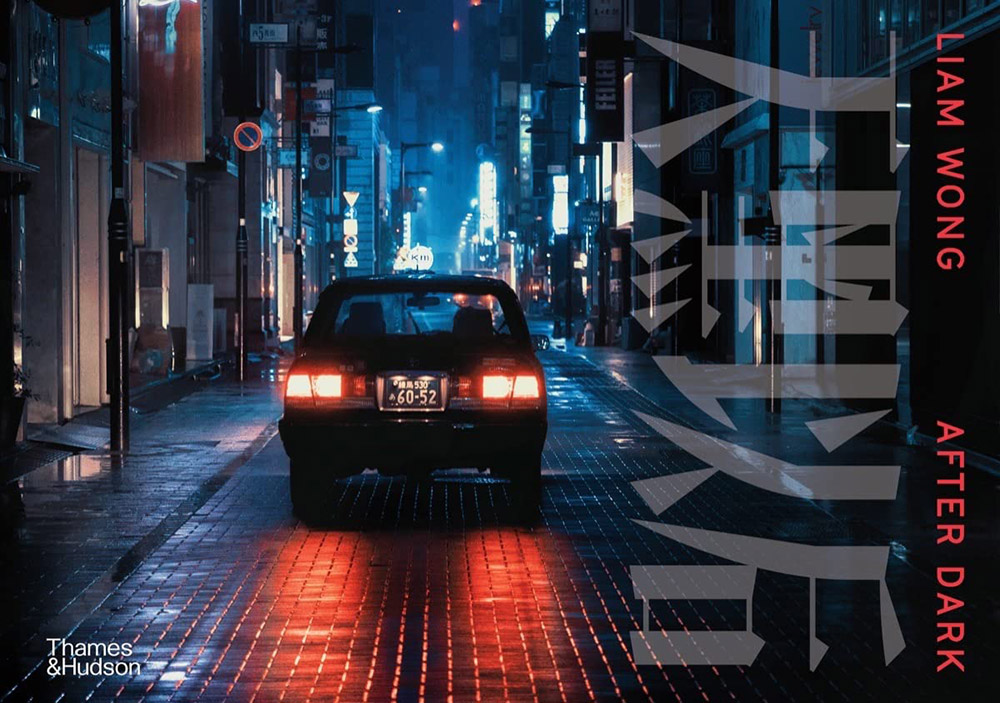
The book After Dark, by Liam Wong, is published by Volume (an imprint of Thames & Hudson), RRP £35.
Liam Wong
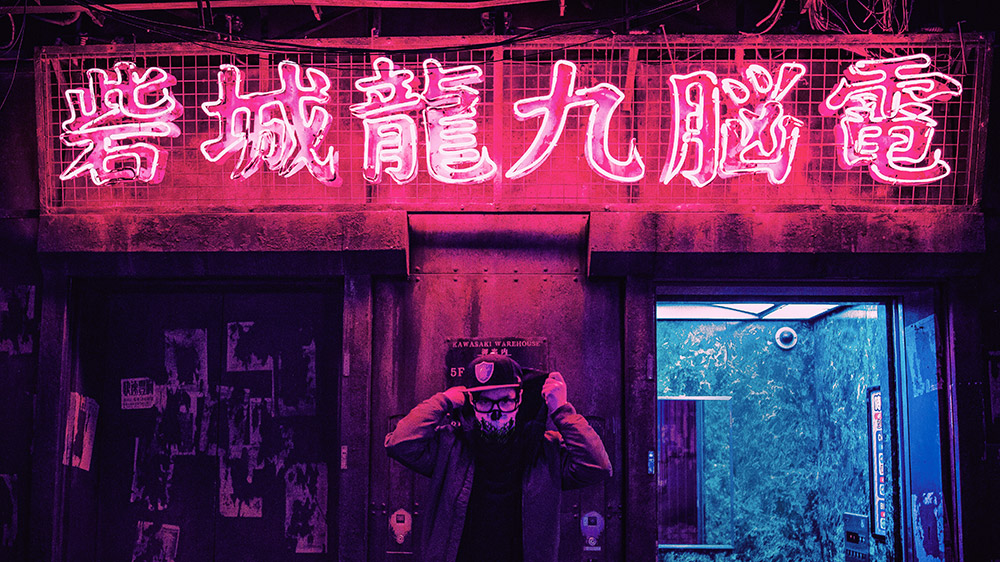
Liam Wong is a game designer, photographer, art director and filmmaker. His travels led him to enjoy taking photographs of cities around the world at night. He went freelance in March 2019 and has now built up an Instagram following of over 220,000 people. Liam was listed by Forbes magazine as one of the most influential 30 people under 30. His latest book is After Dark. See www.liamwong.com and Instagram: @liamwong
Further reading
How to photograph low light urban landscapes
Beginners guide to Street Photography
Art Wolfe on his approach to night photography
6 night photography tips for shooting better cityscapes







